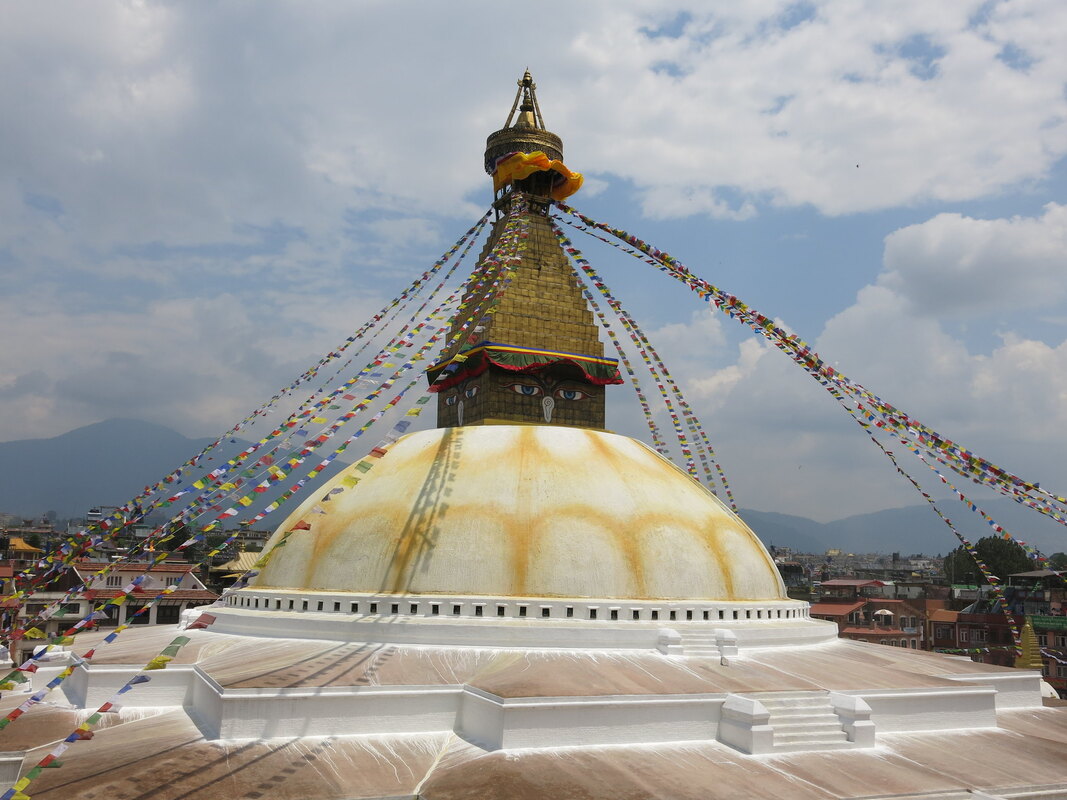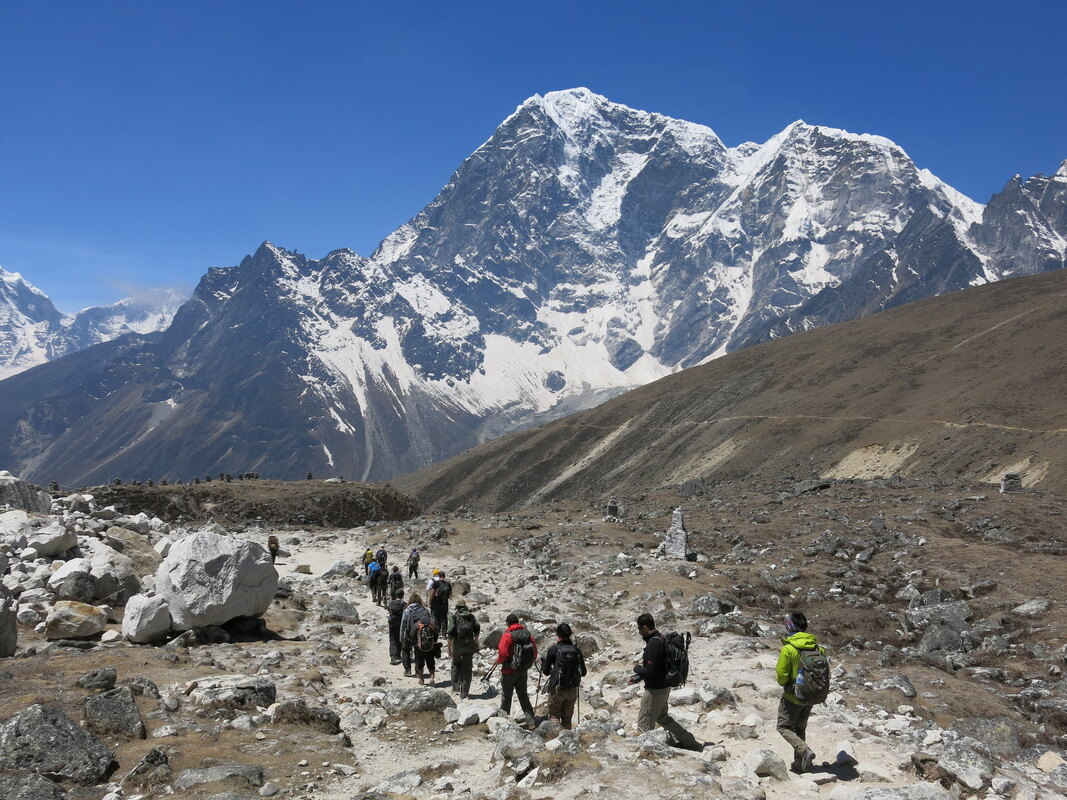NEPAL
Part Indian, part Tibetan, part Hindu, part Buddhist and a mix of over 100 ethnicities makes it difficult to succinctly describe an otherwise compact but mountainous country. Trekking is the initial lure but upon arrival one realizes it’s just the start. The country has a bit of a "wild west" feel but it's citizens and culture is more laid back than India's - there's still a lot of action but not as frenetic - you can actually enjoy people watching and soaking up the environment. Despite Nepal being the birthplace of the Buddha, 81% of the countries 26.4m citizens are Hindu - a higher percentage than India. The country is roughly the same size as Illinois with a few more hills.
COUNTRY BACKGROUND
HISTORY
Pre-1700s: Three Kingdoms: Kathmandu, Patan, and Bhaktapur
1769: Prithvi Narayan Shah conquered kingdoms creating Nepal
1996: Communist Party (Maoists) start violent campaign to replace Monarchy; effective stalemate and cease-fire in 2005
2008: Following widespread democracy movement, monarchy abolished, parliamentary republic established
GOVERNMENT
Several significant changes in past 20 years; 1996 - monarchy head of state w/ PM and parliament; 2008 - monarchy abolished
Executive: Council of Ministers selected by PM, currently Sushil Koirala; PM determined by parliament
Unicameral Legislature: 601 members; 240 directly elected, 335 proportional election, 26 appointed by cabinet
ECONOMY
Percentage of GDP: Agriculture 36%; Services 49%; Industry 15% - Agriculture employs 70%
Landlocked, rugged geography, limited infrastructure, few natural resources, political instability and lack of skill laborers hamper economic growth -> unemployment and underemployment ~50%
EDUCATION
Literacy rate: 66% - 75% male; 57% female
Primary enrollment: 90%; but limited access to secondary education lowers enrollment to 24%
HEALTHCARE
70% of health expenditures private; 2012 govt. experiments with universal health care in five districts
38% of population no toilet in home leads to disease rate increases relative to other SE Asian countries
Pre-1700s: Three Kingdoms: Kathmandu, Patan, and Bhaktapur
1769: Prithvi Narayan Shah conquered kingdoms creating Nepal
1996: Communist Party (Maoists) start violent campaign to replace Monarchy; effective stalemate and cease-fire in 2005
2008: Following widespread democracy movement, monarchy abolished, parliamentary republic established
GOVERNMENT
Several significant changes in past 20 years; 1996 - monarchy head of state w/ PM and parliament; 2008 - monarchy abolished
Executive: Council of Ministers selected by PM, currently Sushil Koirala; PM determined by parliament
Unicameral Legislature: 601 members; 240 directly elected, 335 proportional election, 26 appointed by cabinet
ECONOMY
Percentage of GDP: Agriculture 36%; Services 49%; Industry 15% - Agriculture employs 70%
Landlocked, rugged geography, limited infrastructure, few natural resources, political instability and lack of skill laborers hamper economic growth -> unemployment and underemployment ~50%
EDUCATION
Literacy rate: 66% - 75% male; 57% female
Primary enrollment: 90%; but limited access to secondary education lowers enrollment to 24%
HEALTHCARE
70% of health expenditures private; 2012 govt. experiments with universal health care in five districts
38% of population no toilet in home leads to disease rate increases relative to other SE Asian countries
TRAVEL INFORMATION
INTRODUCTION
September and May is peak trekking season in Nepal but once you are here you realize it's more of a year round destination with lots more to do than just come for an Everest Base Camp hike. There are other hikes and natural attractions.
I’ve written in detail about the Everest Base Camp experience here.
HOTEL ACCOMMODATIONS
The primary tourist area is Thamel - about a 15 minute walk north from Durbar Square and a five minute walk west from the former Royal Palace. Budget accommodation ranging from $5/night hostels to $40/night hotels. Higher priced, Western brand hotels are available in the Embassy Area north of the Royal Palace.
FOOD
Is it Indian? Is it Tibetan? Who knows but there seems to be a little bit of everything in Nepal and particularly in the Thamel area. I was pleased with a food walking tour that took me to some of the non-touristy stalls in Thamel: http://www.backstreetacademy.com/
SITES, ATTRACTIONS, ADVENTURES
Surprised (should have expected more) with the amount of things to do - just in Kathmandu alone. Beyond Everest there’s lots of other treks in the western part of the country. Nepal is also an easy place to arrange and take Tibet and Bhutan tours paying more reasonable prices instead of going through a Western agency. The Tibetan tours take about two weeks lead time to submit the permit request, but supposedly you can go to Bhutan on the spot with the next available tour.
IN COUNTRY TRAVEL
Didn’t do this myself but it’s mostly by bus - ~ 8 hours to Pokhara.
September and May is peak trekking season in Nepal but once you are here you realize it's more of a year round destination with lots more to do than just come for an Everest Base Camp hike. There are other hikes and natural attractions.
I’ve written in detail about the Everest Base Camp experience here.
HOTEL ACCOMMODATIONS
The primary tourist area is Thamel - about a 15 minute walk north from Durbar Square and a five minute walk west from the former Royal Palace. Budget accommodation ranging from $5/night hostels to $40/night hotels. Higher priced, Western brand hotels are available in the Embassy Area north of the Royal Palace.
FOOD
Is it Indian? Is it Tibetan? Who knows but there seems to be a little bit of everything in Nepal and particularly in the Thamel area. I was pleased with a food walking tour that took me to some of the non-touristy stalls in Thamel: http://www.backstreetacademy.com/
- Himalayan Java Coffee Chain - good coffee and wifi
SITES, ATTRACTIONS, ADVENTURES
Surprised (should have expected more) with the amount of things to do - just in Kathmandu alone. Beyond Everest there’s lots of other treks in the western part of the country. Nepal is also an easy place to arrange and take Tibet and Bhutan tours paying more reasonable prices instead of going through a Western agency. The Tibetan tours take about two weeks lead time to submit the permit request, but supposedly you can go to Bhutan on the spot with the next available tour.
- Kathmandu - somewhat steep entrance fees - 250R to 1000R
- Durbar Square - historical Hindu temple area - be sure not to miss Kumari, the living goddess, who appears at a window every 30 minutes or so and waves to the crowd
- Pashupatinath - Hindu burial site - mini Varanasi
- Boudha Stupa - coolest stupa ever; lots of monasteries around the area
- Chitwan National Park - Elephants, Rhinos, and Tigers
- Pokhara - lake town and launch point for Annapurna treks
- Future Trip - http://www.heartsandtears.com/
IN COUNTRY TRAVEL
Didn’t do this myself but it’s mostly by bus - ~ 8 hours to Pokhara.


